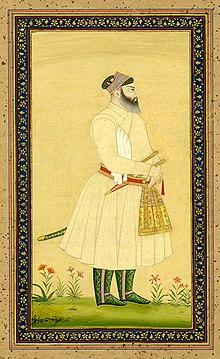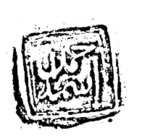Ahmad Lahori | |
|---|---|
 Miniature painting of Ustad Ahmad Mimar Lahori | |
| Born | c.1580 |
| Died | c.1649 (aged 68–69) |
| Occupation | Architect |
| Buildings | Taj Mahal Red Fort Old Delhi Jama Masjid, Delhi |
| Signature | |
 | |
Ustad Ahmad Lahori (c.1580–1649)[1], also known as Ahmad Ma'mar Lahori, was the chief Mughal architect and engineer during the reign of emperor Shah Jahan. He was responsible for the construction of several Mughal monuments, including the Taj Mahal in Agra and the Red fort in Delhi, both of which are World Heritage sites.[2] He designed the Jama Mosque in Delhi as well.[3]
Considered the greatest of the Mughal architects,[1] Ahmad Lahori came from an illustrious family of architects and civil engineers. He was a skilled engineer who, owing to his architectural finesse, was bestowed with the title of Nadir-ul-Asar ("wonder of the age") from Shah Jahan.[4] His architecture is a combination of Indo-Islamic and Persian architectural styles, and thus, a major instance of Indo-Persian culture. The architecture of Taj Mahal has received worldwide acclaim and admiration, enabling it to be listed among the Wonders of the World.[5]
- ^ a b Curl, James Stevens; Wilson, Susan (2015). The Oxford Dictionary of Architecture. Oxford University Press. p. 11. ISBN 978-0-19-967498-5.
- ^ Yasin, Mohammad; Yasin, Madhvi (1988). Reading in Indian History. Atlantic Publishers & Distri. p. 89.
- ^ Khan (Arshi), I. N. (28 August 2015). BLACK TAJ MAHAL: The Emperor's Missing Tomb. Black Taj Project. p. 38. ISBN 978-81-927479-0-3.
- ^ Necipoğlu, Gülru (1 March 1996). The Topkapi Scroll: Geometry and Ornament in Islamic Architecture. Getty Publications. p. 155. ISBN 978-0-89236-335-3.
- ^ "Taj Mahal". New7Wonders of the World. 13 July 2016. Retrieved 15 June 2022.